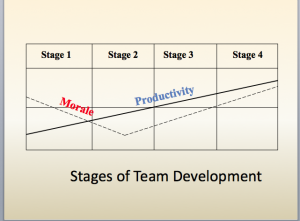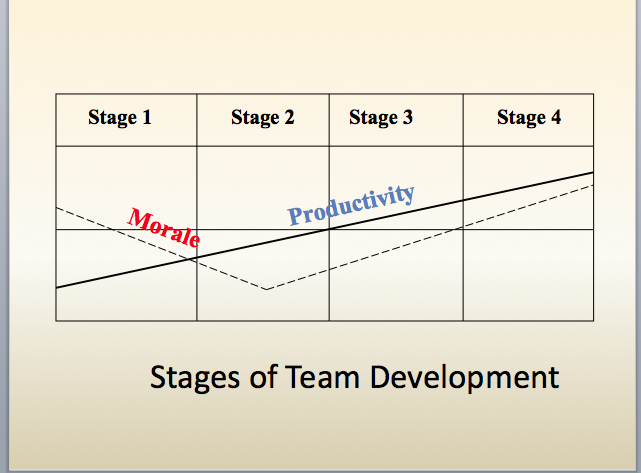I have a distinct memory from the school playground when I was in the fifth grade. It was recess and Cathy E. and I were captains picking teams for our lunchtime softball game. Obviously I grew up in a time when kids got enough time at recess to actually play a game. That’s not my point though. I remember being aware of the privileged position I was put in to choose who was on my team. Yes, to this girl, yes to this girl, not making eye contact with that girl, taking turns back and forth until the last two girls were chosen. When I pointed to a girl, she came and stood behind me, and so it went until Cathy and I each had a line of girls behind us who we would then direct to her place on the field or assign her order at bat. My thoughts at the time were complicated: Why do I get to pick? I’m glad I get to pick! I want the best team. Alright, I got Louise! She can hit the ball into the creek! I’m picking (name withheld) because she’s cool even though she’s not that good. And so on.

For much of my time in school and as a professional, I’ve been privileged to be the one saying “yes” to this person and “no” to another to build or lead various teams. I’ve obviously also been on the other side of the table – being the one chosen or not to be on a team. What I’ve learned along the way are some steps that have worked for me to build high performing teams of direct reports. Each concept can be a starting point or a stepping stone, depending on where a leader or team is on its journey.
The Inherited Team
I feel like the inherited team is the most common type of team to lead. Other than someone building a company or department from the ground up, my experience is that most often leaders are selected to lead a team that’s already been built or in development. As an example, when I was on the phone to accept a position, I asked my soon to be new boss what I could do to prepare for my first day. She said, “Do you know the book, 5 Dysfunctions of a Team?” “Um, yeah.” Uh oh. “The first thing I want you to do when you get here is take your team through that program.” Double uh oh. Turning this this double uh oh team into a high performing team took deliberate action, following steps I’ve learned through my experience building all kinds of teams from the playground to the student council to the ball field to the conference room.
Assess the skills and abilities of each team member
This may seem like a no-brainer, but I’ve learned to be careful about established assumptions. Sometimes reputations built on seniority and certifications can mislead a new team leader. Early in my career, I made the mistake of handing off a high impact project to someone I had just hired who had impressive training and certifications in our field. Because I assumed a certain skill set, I didn’t do enough check ins at the start to assess whether this person really had the ability to handle the project. If I had kept a closer eye on the project and the person, I would have seen that my assumptions about her skills were off. I didn’t do her any favors by giving her something she wasn’t capable of handling and set back the project indefinitely as I tried to retrace my steps. Over time, I’ve learned to take the time to observe team members in action and give them key tasks to perform to see how they relate to their direct reports, collaborate with peers, and execute projects. This process can be fast-tracked if there is a critical need for immediate action but there is bound to be collateral damage around decisions that are rushed. The longer someone has been in a role or with the organization, the longer it can take to peel back layers around skill sets. Sometimes others in an organization have built workarounds around a low performing team or individual. And sometimes work relationships that have become friendships keep colleagues from holding someone fully accountable. I’ve learned to look for gaps and dependencies to better understand the team dynamic and individual skill sets.
Take the time to build the relationship
The amount of time to build one-on-one relationships with direct reports can feel interminable to me when I feel a sense of urgency about the work that needs to be accomplished or am getting pressure to perform. When I was selected as the leader of a team of people who were former peers of mine, I was eager to validate myself to my new direct reports. About six months in, I was slightly discouraged that I hadn’t won everyone over. My boss surprised me by saying that it takes twelve to eighteen months to build these relationships. I will admit that I didn’t believe him at the time. Not me, I thought. I can do it faster. About six months later – a full year into my new role – I realized that I had finally gained the trust and respect of most of my team – and they had earned mine as well. Most, not all. Which brings me to what to do next.
Remove and add members with care and support
There is much debate about the adage to “hire slow; fire fast.” My experience has been that taking time on both sides of this equation has served me well. If the candidates for a position don’t excite me when I think about making the offer, it means I’d better slow down and think again. Or reopen the position. And when making the decision that someone is no longer a good fit for the team or the work of the team, taking the time to understand why that person isn’t being successful has helped me make more compassionate decisions and helped them find their next better spot in or out of the organization. Rash decisions when hiring can lead to long-term regret; rash decisions when firing can lead to hard feelings for life. One way I learn how to do this step better is to have people with more experience help me with the process. I remember the first time I was interviewing to select a new team member and had an experienced person help me with the hire. The warmth this woman showed each candidate and the way she personalized the experience to the individual while sticking to the required questions was a formative moment in my career that helped me get better at hiring. On the other side of the equation, when I think to bring in support when someone isn’t being successful in their current position it helps me be more compassionate and helps me find more creative solutions to personnel actions. Taking that extra step to get support from someone more experienced helps me learn new ways to build and maintain the health of my teams.
Create multiple channels of communication
Obviously, different teams have different rhythms and norms. It can take awhile to find the best ways to gather input and feedback based on the personalities of the team members and nature of the work. As the team finds its groove and as technology changes, these channels usually evolve. I’ve found it helpful to do some sort of personality or personality at work typing to help the team understand their own communication style and that of others. It also helps to regularly do team check ins about the various channels to see what’s working, what’s not, and what needs to change. Two of my favorite personality typing systems are the Enneagram and DISC. I’ve seen exponential growth in team performance when we take the time for this kind of deep dive into understanding what makes us tick, how we behave at work, and our reflex communication styles.
Retreat!
Mention a retreat and sometimes people think “junket.” While I did once get to experience candied bacon for the first time at an offsite overnight retreat at a bed and breakfast, that’s the closest I’ve come to being pampered at a retreat. When planned well and timed to the current needs of the team, a retreat can be exactly what is needed to propel a team forward. It’s easy for a team to get stuck in their routine ways of acting together. When I plan a retreat, I get input on the team about what they think they want to work on and also take into account where what they say melds with what I’ve been experiencing in terms of what needs to happen next in their development as a team and as individuals. I’ve built whole days around “touchy feely” subjects like emotional intelligence and communication styles and witnessed breakthrough moments from those days. I’ve also built retreats around hard work that the team needs to accomplish that can’t fit into their day-to-day schedules. Sometimes the busier a team is, the more it needs a retreat to gain space in their brains to tease out a solution to a difficult problem or time together to work through trust or relationship issues. Whenever possible, I use a facilitator for at least part of the time together to bring in outside expertise and perspective. Just like there is always a way to find time for a retreat, there is always a way to find money. Planning retreats into the annual calendar of a team ensures they happen. If I skip this step, I shortchange the team and stunt its development at the expense of expediency.
Take regular temperature checks
I’ve found that a very helpful system for understanding the stage of team development is the Tuckman model: forming, storming, norming, and performing. Even a well-established team can re-cycle through any of these phases when there is a big change. And some teams never make it to performing. Some questions or observations I make to gauge a team’s stage are along these lines: How is everyone feeling in general? How do they feel about their jobs? How do they feel about the organization? How is the morale of their own teams? How do they talk to each other? Do they call each other out? Do they apologize when they mess up? Do they enjoy each other? Do they know what to do when they come to work? Do they have important work? Are they achieving expected results?

(unattributed – from Tuckman)
Give people really interesting work
Assigning clear roles and responsibilities is a team effort – to a point. I’m big on people having work that is interesting and varied. An integral part of determining roles and responsibilities is knowing the skill set of individuals (remember that step?), knowing the work that needs to get done, and understanding the capacity of the organization. I often err on the side of assigning too much work because I find it easier to lead a team of people who are overwhelmed rather than bored. It’s easier for me to take something off someone’s plate than to find something for them to do. Frequent check ins with individuals, the team, and those impacted by the work of the team help me find balance to keep people from getting burned out or bored. I’ve become very good at giving people interesting work but tend to overwork individuals and take on too much work for the team. Thus the step about having scheduled retreats and regular check ins.
And learn about accountability together
One of the hardest and most rewarding steps to building a high performing team is developing the skill of holding each other, ourselves, colleagues, and other leaders accountable. My own experience with this is varied and evolving. Overcoming conflict avoidance is a huge hurdle. That hurdle feels lower when the team learns that most people really want to know when they’re not performing to a colleague’s or boss’s expectations. They really want to know. So when something is going off the rails, if I take the time to frame my feedback so that it is constructive and direct, it is most effective. Offering professional development and safe ways for the team to practice healthy conflict and give feedback has always paid back huge dividends for me. And I do my best to keep my ears open wide for feedback about my own accountability.
Take the time to learn and grow
As new teams move through the stages of forming, norming, etc. or the stages of health, allowing time for individuals to learn and grow is a linchpin to the future success of the team. Learning to let things take the time they take is a lesson that I learn again and again. I feel confident about mentoring emerging leaders about patience because of the pain I’ve sometimes caused others from either rushing or procrastinating on my own projects. One time I had a boss lose patience with my slow (avoidance) approach to moving someone out of the organization. When he couldn’t take it anymore, he said: “You’re going to get in there and fix it. Now.” Got it. Did it. Another time I was being encouraged to promote a team member in a hurry to take some pressure of me and the organization. By this time in my career, I had learned enough to take my time to assess the skills and abilities of each team member. I promoted someone, but not the person originally proposed to me. I’ve never regretted taking that time to do it well.
Are there more steps? Sure. These musings are starting points and stepping stones that work well for me. Right now, they are reminding me that it’s time for a temperature check for me and my team. Retreat!
Recommended Reading:
Tribes: We Need You to Lead Us/Seth Godin
Seth Godin is always thought-provoking. This book isn’t about team building, per se but about how we form groups and the art of leadership. It’s short and worth reading.
The Essential Enneagram: The Definitive Personality Test and Self-Discovery Guide/David Daniels, MD; Virginia Price, PhD
For anyone who thinks the Enneagram is some sort of voodoo woo woo who knows what, this brief primer should dispel that idea. There are lots of great books about the Enneagram. This one is kind of like a book to keep in your pocket for a quick answer to a complicated question like: Why is she acting like that? Why do I keep doing that?

October 22, 2016 at 7:38 pm
“taking the time to understand why that person isn’t being successful has helped me make more compassionate decisions and helped them find their next better spot in or out of the organization.”
This is what makes you such an unique leader Donna as very few leaders in your position do this.